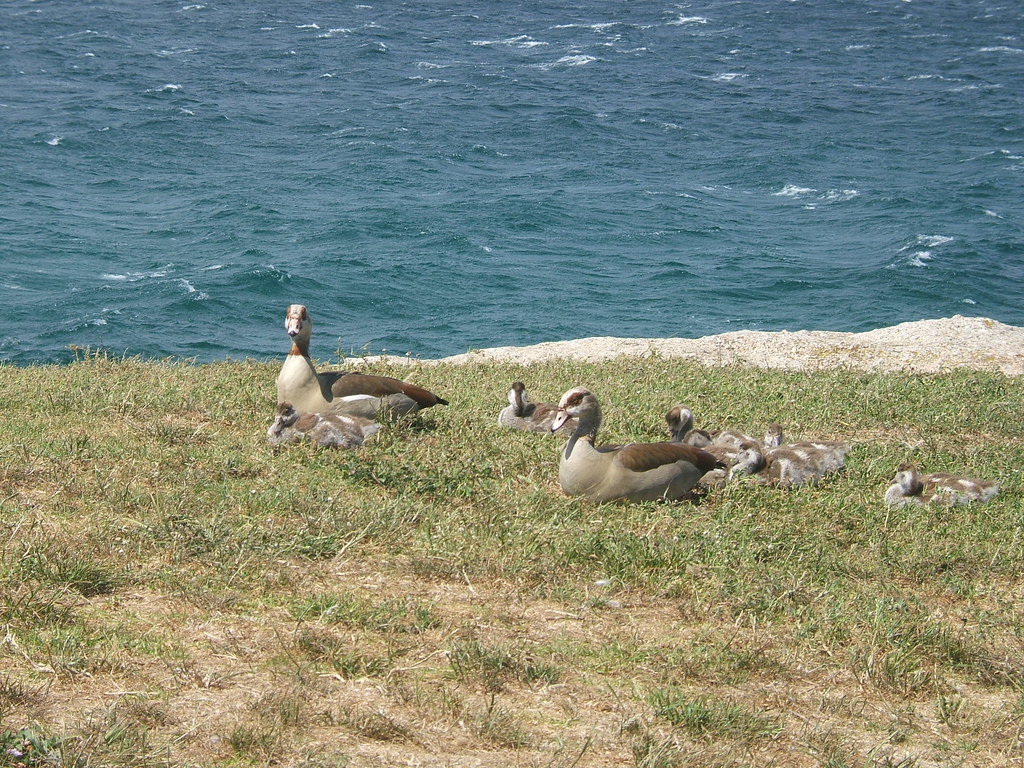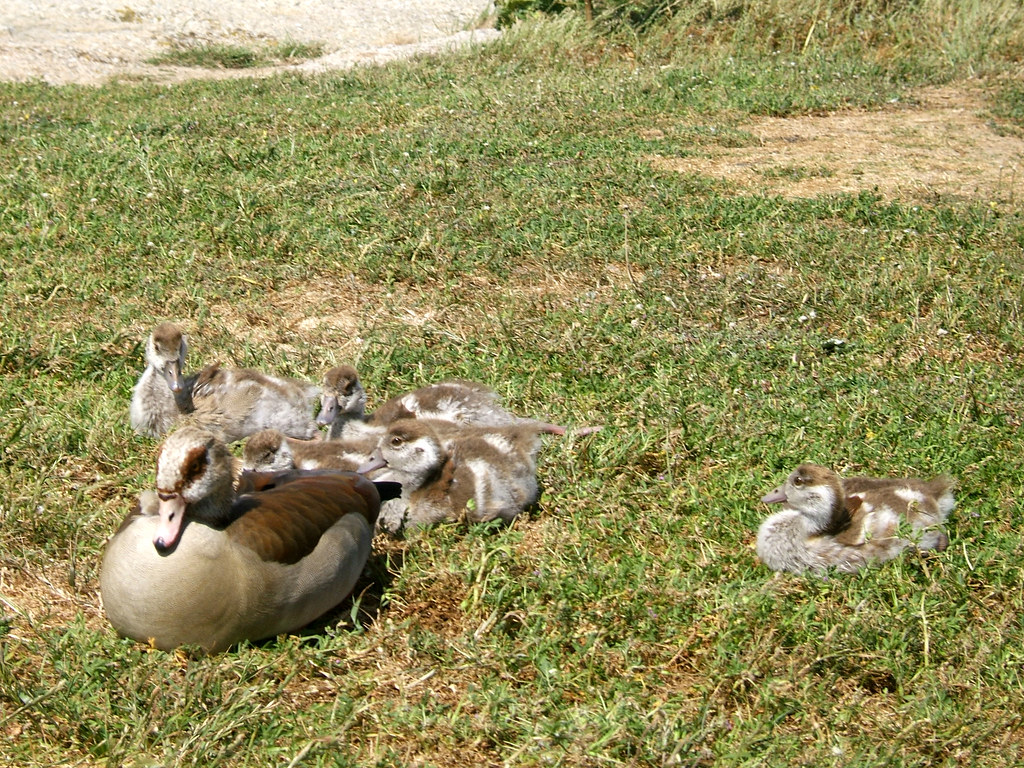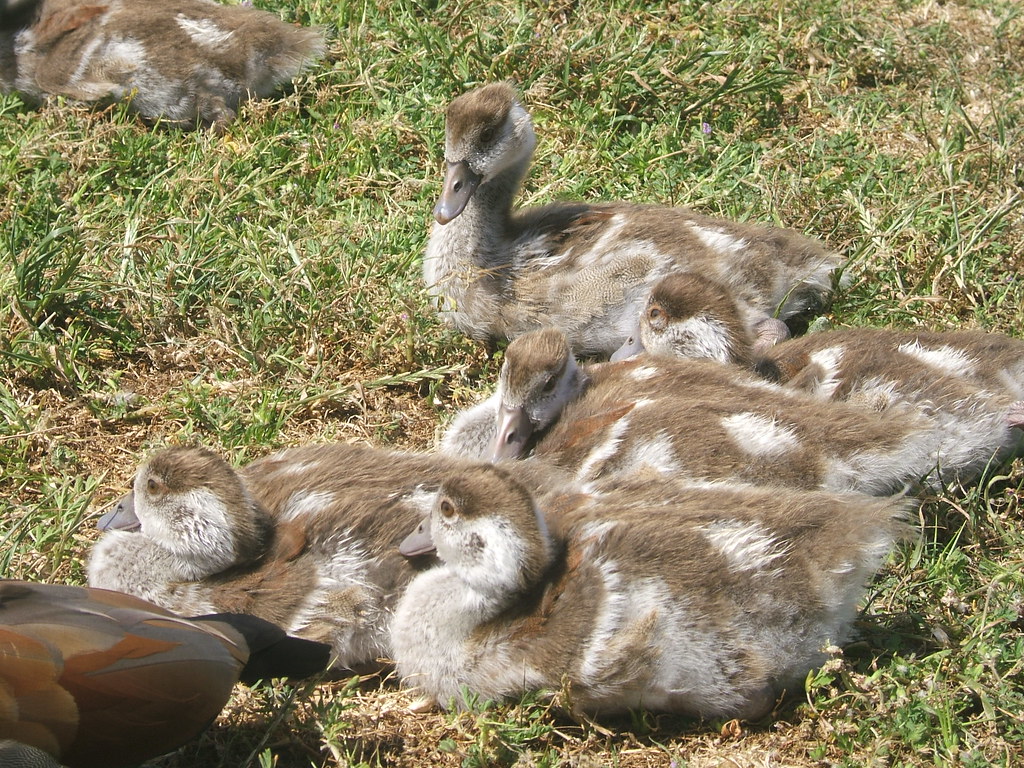
They are naturally found spread through the Nile valley and southern africa but due to their attractive plumage they have been kept as ornamental waterfowl in the UK for three centuries. As with the Mandarin Ducks, and the, erm, A-team, they promptly escaped and set up a feral population. They haven't spread outside East Anglia, probably because they nest in winter and they started from a small population and I have yet to see one in the wild in the UK. They have now been added to the official British bird list as there population is deemed self-sustaining.
I do think there's a hint of drama queens about these birds though. The only time I seem to see them is next to picnic tables or carparks or somewhere else there will be lots of people to fuss over them and how cute their goslings are. I suspect they may have been receiving snacks of some kind from the visitors to the carpark or nearby restaurant as they were totally unperturbed by passers-by and allowed me close enough to take these shots without my telephoto lens. Truth be told when I found them I think they were feeling a bit underappreciated. Boulders is famous for having Africa's only penguin colony (there are a huge number of Jackass penguins breeding on the white sand there) and most of the tourists only have eyes for birds clad in black and white. Personally I enjoyed watching sunbirds, lizards and the geese as well as the penguins, who at risk of anthromorphising them even more, gave off the air of celebrities rather bored of being photographed by papparazzi.
Waterfowl and gamebirds form the vast bulk of category C of the British bird list which is the one dealing with self-sustaining reintroductions and feral populations. This is because they were often released on to the estates of wealthy landowners to beautify the carefully arranged lakes and forests. As far as I'm aware only two of these species are causing any real ecological issues; the Ruddy Duck (from the southern hemisphere) is hybridising with the endangered White-headed Duck and is being culled as a result, and the Canada goose is breeding to epidemic proportions. I think we've been pretty lucky so far in this respect with birds (although not with other invaders) and most of the newcomers represent an intriguing bit of variety. Plus it can be very entertaining to hear bemused people say "is it me or is that swan black?"
2 comments:
Egyptian Geese have been kept as exotics in the United States as well, with the same result. I have seen feral Egyptian Geese on several occasions, but they are not yet regarded as "established". They are quiet striking birds.
Thats pretty much exactly what Mike (10,000 birds) said - they obviously get around. Agree about how striking they are - one of those birds that look prettier in real life than the books
Post a Comment